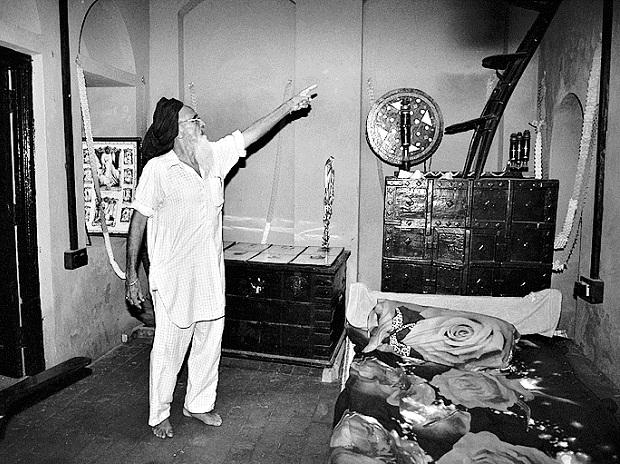KARTAR SINGH
He was born in a Jat Sikh family in the Sarabha district of Ludhiana to Sahib Kaur and Mangal Singh on May 24, 1896, Kartar Singh was the only son of his loving parents. He lost his father early in childhood and his grandfather had brought him up. He finished primary education in his village school and completed matriculation from Mission High School. When he turned 16, his grandfather sent him to the University of California at Berkeley to study Chemistry.
Bhagat Singh referred to Kartar Singh as his "Guru".

1. Nalanda Club
- An incident at the immigration upon reaching San Francisco changed his life forever. He noticed that the Indians were subjected to humiliating questioning, while immigrants from other regions and countries were allowed in after bare minimum formalities. He was told this was because "Indians are slaves" and therefore, second-rate citizens.
- His association with the Nalanda club of Indian students at Berkeley aroused his patriotic sentiments and he often got agitated about the treatment meted out to the Indian immigrants, especially manual workers, in the United States.
- Kartar Singh worked as a fruit picker to support his education and observed that the Indian farm labour was often treated shabbily and discriminated against in terms of wages.
2. Gadar movement
- The Gadar movement was born in 1913; Kartar Singh became a key member. Gadar Party was formed by the Indians in Oregon on April 21, 1913, to oust the British from India, putting all they had at stake.
- Kartar Singh was made in charge of bringing out the Punjabi language edition of Gadar, the party mouthpiece. Besides Punjabi, Gadar was published in Hindi, Urdu, Bengali, Gujarati, and Pushto and went to Indians worldwide. The newspaper highlighted the atrocities of the British and fuelled revolutionary ideas among the overseas Indians Soon, World War I broke out and the Gadarites decided that it was time to shift base to the homeland and mobilize the countrymen.
- As the British got busy defending themselves in the world war, a declaration of another war was issued against the British in the August 5, 1914 issue of Gadar, and copies circulated among Indians around the world, especially Indian soldiers in British cantonments.
- On September 15, Kartar Singh left for India with Satyen Sen and Vishnu Ganesh Pingle and met Jatin Mukherjee, of Yugantar, in Kolkata.
- Mukherjee connected him to Rash Behari Bose. Kartar Singh met Bose in Benaras and informed him of the arrival of as many as 20,000 more Gadarites and plans for the revolution.
- Unfortunately, the British got wind of the revolutionaries' plans and launched a massive operation to apprehend the rebels.
- Several Gadarites were arrested at the Ports itself. This did not stop Kartar Singh from planning and he went about preparing the base for the revolution in Punjab.
- He focussed on mobilizing Indian soldiers in the British Army to join the movement, especially cantonments of Meerut, Agra, Benares, Allahabad, Ambala, Lahore, and Rawalpindi, and simultaneously set up a small-scale arms manufacturing unit in Ludhiana.
- The date for revolt was set at February 21, 1915, along with senior leaders, including Bose and a plan was made to attack cantonments of Mian Mir and Ferozepur while Ambala was prepared for a mutiny. Here too, a traitor let them in a day before the mutiny and several revolutionaries were arrested. Kartar Singh however managed to evade the British.
- Refusing to give up, he made a last-ditch, desperate attempt on March 2, 1915, to rouse the Indian soldiers of the 22 Cavalry at Chak No. 5 in Sargodha and incite the soldiers to mutiny. This time, Rissaldar Ganda Singh of the 22 Cavalry got him arrested.

3. Lahore Conspiracy case
He was sent to trial with the other Gadarites at Lahore in what came to be called the Lahore Conspiracy case. The judgment was pronounced in September 1915. Due to a large public outcry out of 27, the sentence of 17 of the Gadarites was changed from death to imprisonment and deportation for life in the Andaman Cellular jail, at the last minute following the intervention of Lord Hardinge, the Governor General of India.
Ikk Miyan Do Talwaran-A Punjabi novelist Nanak Singh wrote a novel titled “Ikk Miyan Do Talwaran” based on his life.
|
For Prelims: Ghadar movement, Lahore conspiracy, Lord Hardinge, Bhagat Singh, Kartar Singh For Mains: 1. Although the Ghadar movement failed to achieve its stated objectives, it cannot be termed as a failure. Critically analyze.
|



